For Amal Kabalan, hope can be found in her resilient students. Kelly Knox is inspired by the legacy of the late English Professor Carmen Gillespie. Joe Tranquillo celebrates the value of taking a timeout rather than living in perpetual “run” mode. Yasameen Mohammadi ’20 rediscovers hope after family tragedy. For Chet’la Sebree, hope resides in careful use of language. Nikki Young pins her hopes on a more inclusive, equitable and diverse Bucknell. Matt Bailey looks to analytics as a solution to time-sapping problems. And John Hunter urges us to think in new ways. I hope you enjoy their essays on the following pages.
A final word: What does hope mean to you as we move into 2020? Please share your thoughts at bmagazine@bucknell.edu or on @BucknellU social media channels.
— Sherri Kimmel, editor
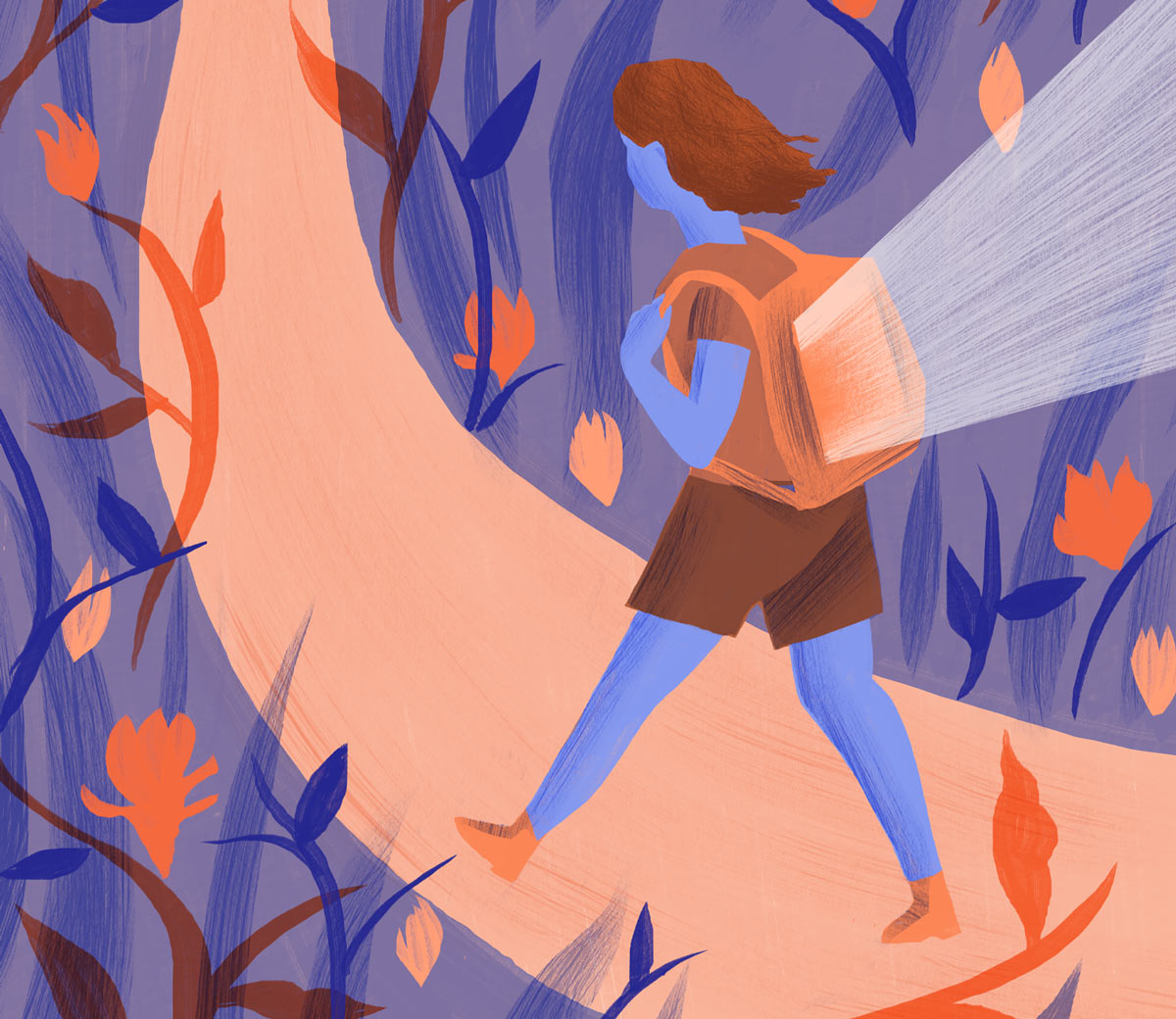
For Amal Kabalan, hope can be found in her resilient students. Kelly Knox is inspired by the legacy of the late English Professor Carmen Gillespie. Joe Tranquillo celebrates the value of taking a timeout rather than living in perpetual “run” mode. Yasameen Mohammadi ’20 rediscovers hope after family tragedy. For Chet’la Sebree, hope resides in careful use of language. Nikki Young pins her hopes on a more inclusive, equitable and diverse Bucknell. Matt Bailey looks to analytics as a solution to time-sapping problems. And John Hunter urges us to think in new ways. I hope you enjoy their essays on the following pages.
A final word: What does hope mean to you as we move into 2020? Please share your thoughts at bmagazine@bucknell.edu or on @BucknellU social media
channels.
— Sherri Kimmel, editor
At the beginning of every semester, I feel like a child in front of a Christmas tree, ready to unwrap new stories. I feel very honored and humbled when students talk to me about their passions, their struggles, what makes them tear up and what inspires them to jump for joy. Whether driven by an urge to do better because their parents worked hard to send them to Bucknell, or an eagerness to find meaning in a new life after escaping a war zone, the stories my students share inspire me.
Helping students navigate their struggles — whether social, academic or emotional — is what keeps me going. During the fall semester, I helped Emily Bayuk ’21 illustrate optoelectronics concepts for young girls interested in engineering. She has a wonderful talent for writing as well as drawing and illustrating abstract concepts. Emily published her first book, The Fundamentals of Circuits Made Easy, and plans to publish a couple more books on the electrical engineering concepts that she is learning in her classes.
I am also developing solar backpacks to help students study at night in refugee camps. This summer, funded by Davis Projects for Peace, I accompanied Shehryar Asif ’21 to refugee camps in Lebanon to pilot a solar backpack project. We offered a two-day workshop to an all-girl class. The first day we showed students how to make cars run on solar panels, and the next day we introduced the solar backpack. The experience was one of a kind, but the most inspiring thing about it was to experience firsthand how resilient young people are. The refugee students’ living conditions were harsh, but they were the happiest kids I have ever seen. They were eager to learn, playful and fun.
This spirit of resilience that I see in many students — whether in Lebanon or Lewisburg — gives me hope. No matter how gloomy our current situation is — climate change, political division, etc. — I truly believe that the youth have the power and capacity to rise to these challenges. In them lies the secret to the continuity of life. To be a part of that process inspires me daily.
— Professor Amal Kabalan, electrical & computer engineering
In different industries and contexts all over the country, there are impassioned and caring people besieged daily by quotidian tasks. An example from my recent research project with Professor Lucas Waddell, mathematics, involves a newly appointed administrator of a school providing full-day, one-on-one tutoring for autistic students.
Each day the administrator struggles to match each of his 100 autistic students with an appropriate tutor for every hour of the subsequent day. This task is further complicated by the students’ and tutors’ availability, and the need to match a tutor’s qualifications to a particular student’s needs. The administrator spent 10 frustrating hours per day juggling the creation of the next day’s schedule, and in real time, correcting the errors in the current day’s schedule.
These last-minute corrections had a severe impact on the tutors’ workplace climate and, most important, on the learning environment for students who are sensitive to changes in their planned day. As a result, the administrator was desperate for any assistance that would allow him to devote more time to improving the learning opportunities and resources for his students rather than grappling with scheduling conflicts and corrections.
Fortunately, analytics has the power and promise to alleviate these burdens through decision-support systems that can quickly and cost-effectively provide quality solutions. The objective of analytics is not to remove people from the decision-making process, but to elevate them by helping to distill decisions when possible to only those aspects where a “human touch” is needed.
In our recent work with the school administrator, Lucas Waddell and I developed a system to reduce his daily planning time by 60%. The administrator reported that his newly freed time benefited the students and the school “by allowing me to consistently schedule staff training, manage scheduling requests and the variable needs of the school. The impact of this project has been far beyond what I expected.”
In my research, I am fortunate to witness the great promise and personal value analytics can provide, whether for a health-care administrator trying to allocate patients to beds, to a principal assigning students to classrooms, or, as in the example above, creating daily tutor schedules for students.
Externally, analytics may be seen as an emotionless topic focused on the relentless pursuit of efficiency, but in my experience, it is an essential way to conserve and preserve our most precious and personal resource — time. What gives me hope for 2020 and beyond is how this gift of time allows devoted and caring people to make a more positive impact upon their organizations and greater communities.
— Professor Matt Bailey, analytics & operations management, Freeman College of Management
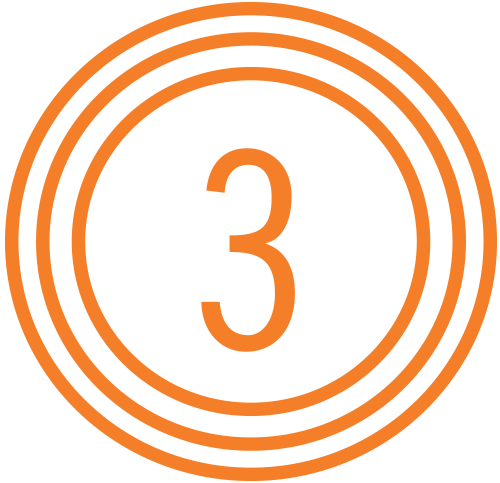

I immediately flashed to some of the amazing students with whom I’ve had the privilege to work — those with ambition to improve human and environmental conditions are a continuous source of hope to me, so I was ready to write.
Then I heard the news. My dear friend and colleague, Professor of English Carmen Gillespie, passed away suddenly on Aug. 30. My heart broke. People far beyond the scope of campus who knew Carmen were devastated, with people reaching out to me and other friends of hers through social media, emails and phone calls, expressing shock and grief from all parts of the country and globe. Hope had dissipated, and I no longer had anything to say. What could I possibly have to contribute about hope in the shadow of such sadness?
As I came out of a personal fog, and realized the enormous scope of Carmen’s community, I began to see beyond the heaviness of my own heart. I thought of the immense generosity, compassion, motivation and intellect that Carmen embodied and that drew so many to her light. In her 54 short years, Carmen modeled what it is to live a rich and meaningful life, fully engaged with others and turning to those around her as a source of hope. Could it be that she left a roadmap for those of us left behind?
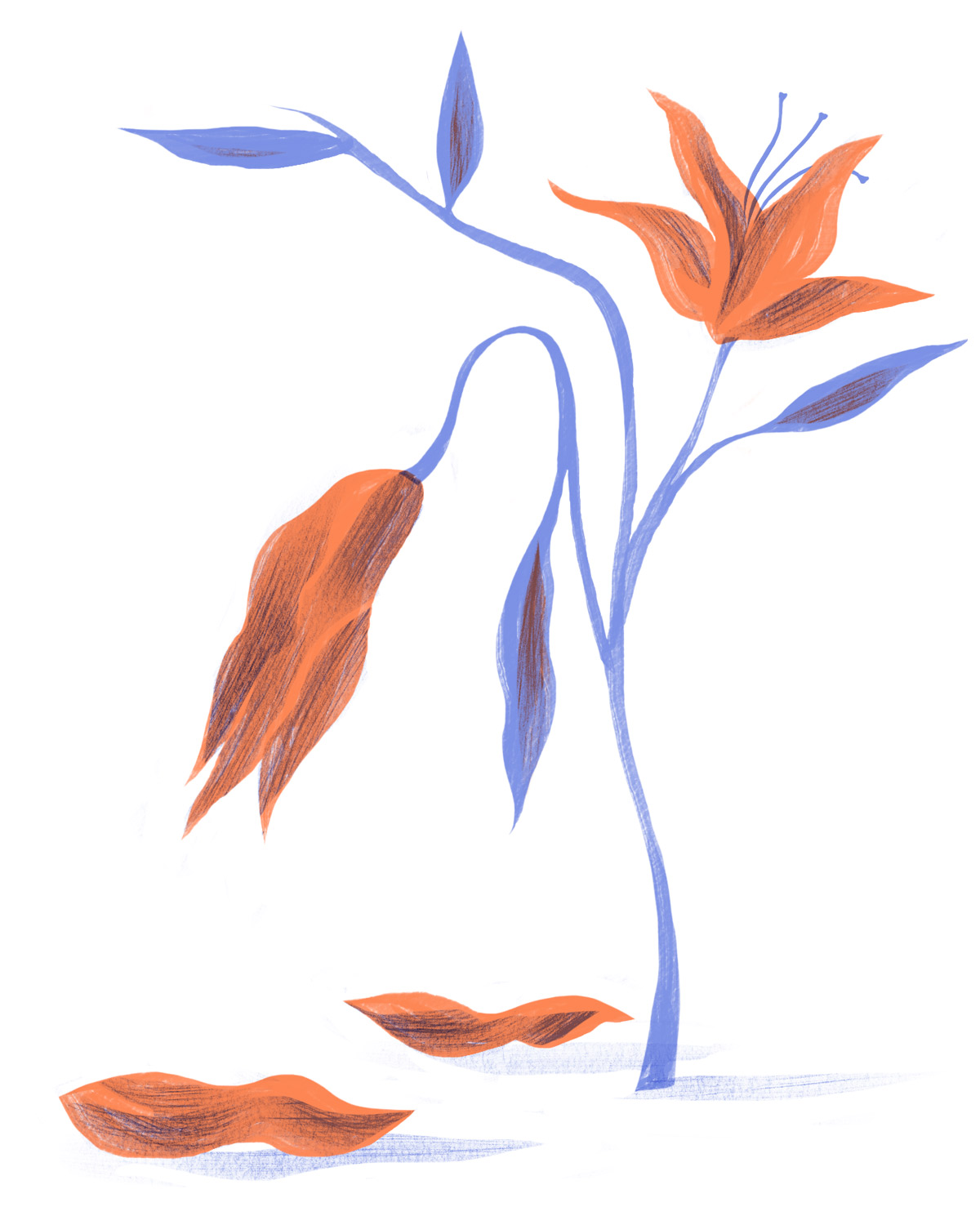
So I still have hope, in spite of this tragic loss. This incredible woman, poet, activist, mother, daughter, widow and friend, in her too few years on this earth, made such a deep, positive and lasting impact on so many people. She provided a map of the heart to show us how to live by making the most of our true resources: intelligence, creativity, action and community. For this lasting gift of hope, I am truly grateful.
— Professor Kelly Hope Knox, dance
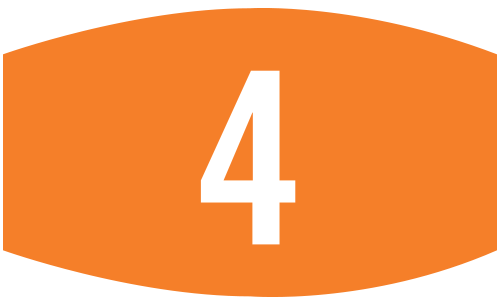
Change. Repeat.

Change. Repeat.
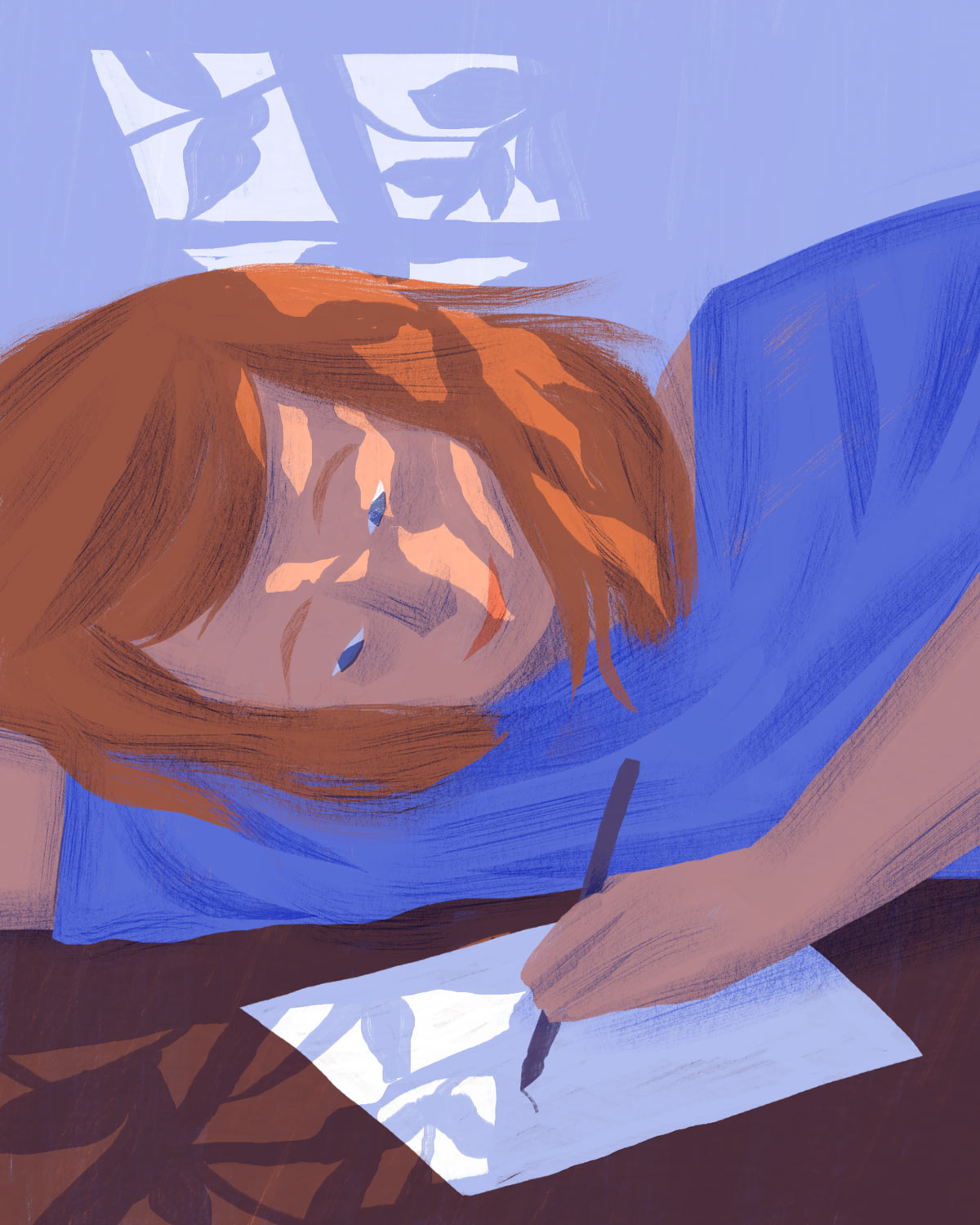
Sometimes writers presenting work are defensive of the strategies, techniques and devices they’ve used — hostile to the idea of revision. From this was born the workshop in which the person receiving criticism is not invited to speak until the end. Sometimes people offering feedback are at a loss for how to thoughtfully comment on the presented work because it’s either too polished or too obtuse. This can lead to negligible comments that result in shallow revisions or a request for a better explanation of the point of the piece, which can either lead to resistance or acquiescence (and, hopefully, major revision). When everything aligns as it should, everyone works together in collaborative, generous ways.
In Mary Oliver’s A Poetry Handbook, she writes, “The best thing about workshops is that people learn there that they can change.” Although she’s speaking specifically about writing, I hope this growth extends far beyond the page. In workshops, students encourage each other to be open to change through an attention to language and experimentation. In a world of text messages and memes — in which, my students say, standard capitalization denotes a tone of severity — their attention and openness gives me hope. Language, though we use it every day in casual, careless and malicious ways, is important. As someone who has invested my life’s work in the impact of language, I’ve worried about not only its general usage but about the ideas born of it.
My students give me hope that perhaps this care they’re curating will extend not just to poems but to the words they use as they pursue careers in poetry, public policy and management. Beyond the words they use, I hope they put this much care into the ideas they formulate and the beliefs by which they stand. I hope they remain open to critique and growth, and that their rhetoric seeks to unite and understand rather than to divide.
In many ways, my hope for 2020 is that the world operates more like this, more like our 52-minute class periods.
— Professor Chet’la Sebree, English, and director of the Stadler Center for Poetry & the Literary Arts
to Change
to Change
This is why I know that hope is a necessary component of diversity, equity and inclusion (DEI) work. As a faculty member and administrator, hope is my constant companion. It helps me as I work with colleagues and students to build knowledge, develop skills, offer support, produce ideas and co-create learning and working environments for a community in which each person feels and lives with a sense of belonging. My courses as well as the DEI efforts at Bucknell are about creating a context, community and capacity in which each person can thrive. The work is about place-making and social transformation. It is about shifting the perspectives about inclusion and equity. Even more, it is about building on the vulnerability of our desires and knowing that the Bucknell for which we hope may be something not yet imagined.
We may be proud of Bucknell’s public identity as an innovative, research-focused, community-oriented, and leadership- and opportunity-driven learning community, but facing our progress on diversity, equity and inclusion can be a humbling experience. It’s hard to admit that we have work to do: relationships to repair and/or build, behaviors to shift, policies to change, an environment to reshape and more. When doing this work, we will be answerable to our past and present as an institution but also accountable to the future Bucknell that we want to exist. Sure, it is frightening and destabilizing to long for a university (and a world, for that matter) that histories of oppression and current realities of injustice suggest is not possible. Yet I know that many of us have the courage and nerve to desire and anticipate an inclusive, equitable and diverse community. This audacity fortifies our capacity to work for things beyond what we know, above what we expect and outside of that with which we are comfortable.
But we have to dare to dream.
Bucknell has lots of potential; I can perceive and feel the rumbling of possibilities. Many of us are oriented to change and poised for the shifts in culture and community that will engender both a sense and the experience of belonging for all of Bucknell’s constituents.
Hope suggests that we can (and perhaps ought to) long for different circumstances, social and political contexts, relations and more, because doing so is ethical work. And as ethical work, hope both comes out of and directs us back to virtues like humility, vulnerability, accountability, audacity and tenacity — all of which are necessary for the kind of joy-filled community transformation that can help us foster an equitable, inclusive and diverse community at Bucknell.
— Professor Thelathia “Nikki” Young, women’s & gender studies and religion, and interim associate provost for diversity, equity & inclusion
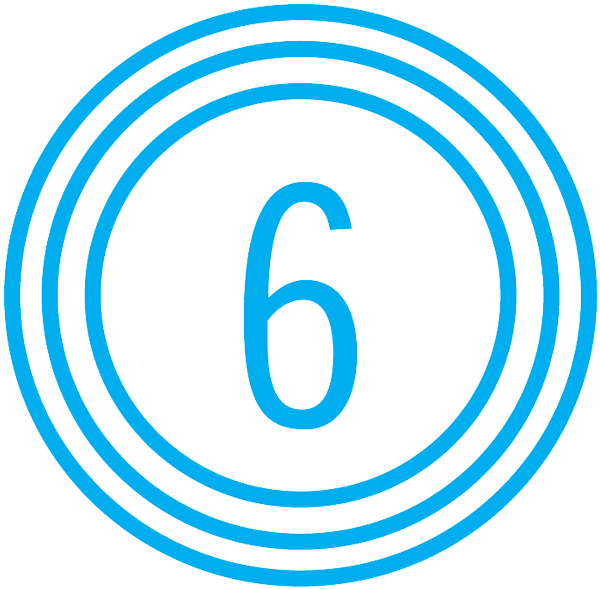

Radical Change
The consequences of realizing all of this is that our lives will have to change radically — it is no longer a question of looking for “growth” or “innovation” or an improved version of what already exists. We need to be willing to re-examine and to radically change some of the most fundamental aspects of American life: Can we imagine being a nation in which owning a car is not a necessity for middle-class life? After two centuries of industrial civilization telling us that we could always master our environment, can we learn to care for it? Or subordinate our desires to its needs?
While it may seem logical to adopt new modes of thinking in order to respond to new situations, it is incredibly hard to do so. Our education systems, our social and economic structures and the very workings of our brains all encourage us to be creatures of habit. The ancient Greek word ethos, from which we get our concept of “ethics,” meant “habit” or “character;” the two are almost synonymous. From the early Christian theologian Saint Augustine to contemporary theorists such as Judith Butler, there have been thinkers who have reminded us of how entrenched and how enchanting our habits are. And that progress often takes the form of breaking or opening them for comparison to the habits and ideas of others outside our group, our nation, or even our species.
During the past few years, I have been given hope by the willingness of Bucknell students to do this hard work of thinking the new, of breaking their mental habits and realizing that the present world situation requires us to want new things. Ideas or modes of living that were once unthinkable seem possible or even necessary to them. Our task as an institution is to create an environment that encourages and tests these new modes of thinking. After all, as the great comparative literature scholar Gayatri Chakravorty Spivak puts it, instructors can’t really “change minds;” we can only alter desires. I find hope in our students’ willingness to desire and think in new ways.
— Professor John Hunter, comparative & digital humanities

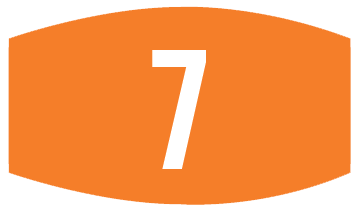

We humans have come a long way from these humble beginnings. We can endure some pain for the promise of better times, we can reflect on experiences and learn from them, and we can adapt our actions based on advice and observing others. But we still run when we are certain and tumble when faced with uncertainty.
Run mode is measurable and observable by others. We get rewarded for running. Set a goal, take actions, show off your results and move on to the next goal. In my case, being a professor has been all about run mode — long term to get to this point in my career, and short term as I switch between the various roles I play. But there’s a catch to living in run mode — it is all too easy to become blinded by our goals, or even worse, accept someone else’s goals as our own. Sometimes sorting all of this out seems hopeless.
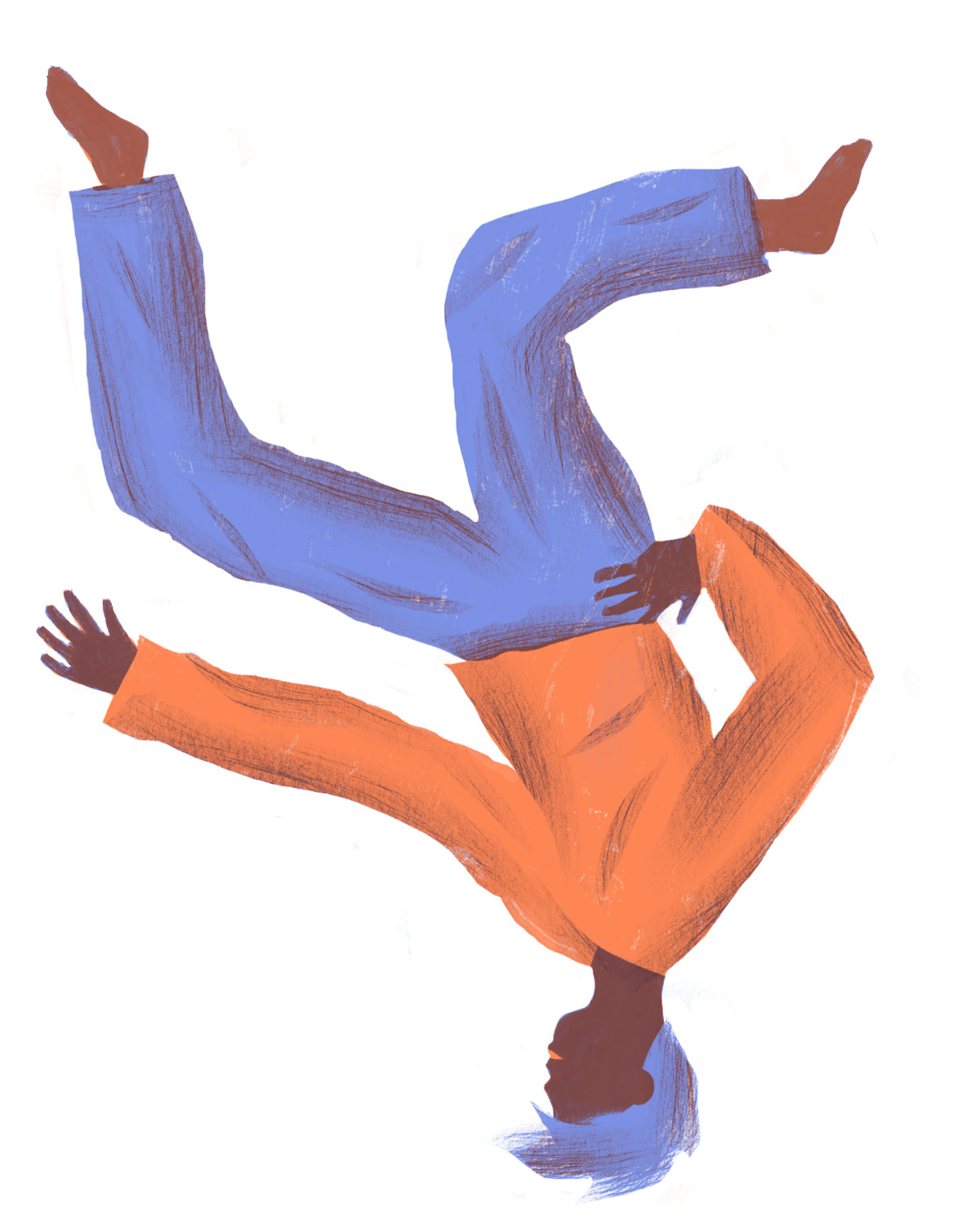
As I look toward my own future, this feels like a good time for a planned tumble. In a short span of time, I was promoted to full professor, became director of Bucknell’s Teaching & Learning Center and began my current spring semester sabbatical in the United Kingdom. To be honest, I don’t know my next direction. I’ve experienced these disorienting moments before and treated them as frivolous luxuries or annoyances. This time I’m going to try something different — I’m going to pay closer attention, tumble a bit longer and resist the urge to run. For someone who has fallen into the habit of running, I don’t expect this prolonged tumble to be easy! But I have seen others master the art of tumbling, and I will try to follow their advice. I will sketch ideas in my notebook but not act on them. I will meet new people and reconnect with trusted mentors. I will read far outside my usual domains of interest. Maybe I will learn to play the guitar. Above all, I want to learn to savor the hopefulness of tumbling.
— Professor Joe Tranquillo, biomedical and electrical engineering, and director of the Teaching & Learning Center
As a middle-schooler in my war-torn country, Afghanistan, I was strangely hopeful – not only for me but for my country – that the bomb blasts and the war would stop one day. When everyone else said it was impossible, I still thought Afghanistan was my future and that I would never have to leave it for good. I saw myself as part of the solution; therefore, I read books, discussed issues and asked questions, remained intellectually curious, and actively fought for gender equality and human rights. My activism and academic record earned me a scholarship to transfer to an international high school in Minnesota and later to Blair Academy in New Jersey. There, I found people who believed in my hopes and helped me get a first-class education so I could make myself and my country better. Life was great.
But in summer 2013, when I returned to Afghanistan to spend my school break with my family, I lost a dear cousin to a bomb blast. He was only a couple of years younger, we had spent our childhoods together, and he too hoped for a better tomorrow. I could not believe that he was taken from us so brutally. I hated that we were all so helpless. For the first time in my life, my hope for a better tomorrow had dried up with every tear that fell from my eyes. I was depressed and lost all confidence that I could change the world.
When I returned to the states that fall, the bombings continued in Afghanistan, and more of my friends were killed. I did not forget my cousin but learned how to live with the pain of loss — if I wanted to survive. It took me several years and a lot of love from my parents, host parents, advisers and therapists to get out of that deep hole of depression. When I was admitted to Bucknell, I promised myself that I would use the opportunity to empower myself so that I could empower others. As I regained hope and confidence, I began seeing my survivor’s guilt as an opportunity to help others more.
With help from my professors, the Bucknell Public Interest Program and the Afghan Girls Financial Assistance Fund, I realized in 2017 my dream of opening the first Braille library in Kabul for blind kids. On the library’s opening day, I regained a good chunk of the hope I lost in summer 2013. And this past summer, my confidence and motivation to think beyond myself increased even more thanks to an internship with Save the Children that was arranged by Professor Eric Martin, management. I worked in Serbia as a translator, cultural mediator and researcher with immigrant women and separated and unaccompanied children from Pakistan, Afghanistan and Iraq. The experience reminded me of how valuable my education is, and that I can be part of a solution to the bigger problems and crises we’re facing not only in Afghanistan, but around the world.
— Yasameen Mohammadi ’20 is a managing for sustainability major.